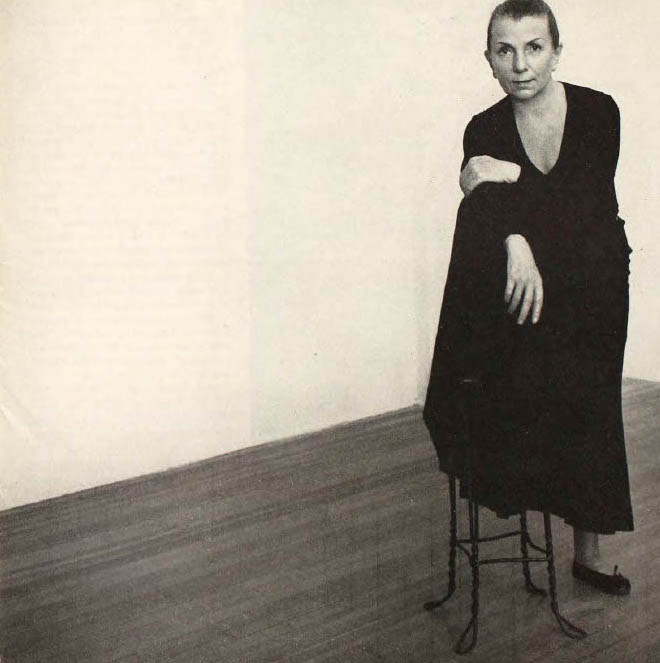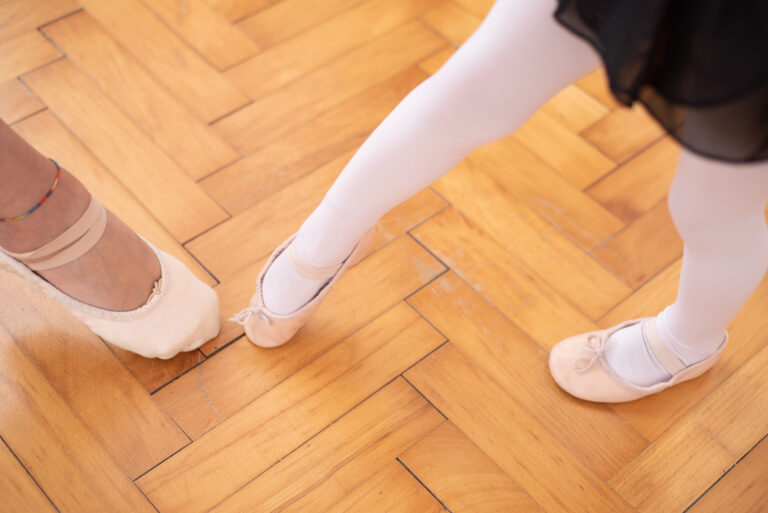
A tap dancer’s upper body might be hunched or upright, quirky or smooth, depending on the individual’s style. “People might think it looks silly when hands or arms are doing awkward things, when the dancer is reaching for infinite possibilities,” says Jared Grimes, tapper and choreographer based in New York City. “But that’s what the back and core muscles do for a dancer. They provide support for the thoughts below.”
All genres of dance require a strong and flexible back. Whether it’s grounded hip hop or classical ballet technique, good use of the back will mean the difference between disjointed movements and dance that is fluid, powerful and multidimensional. But it can be difficult for dancers to feel and use this part of their body they cannot see. Imagery and breath will help students access these muscles, build awareness and show them their backs can help them be more versatile.
Feel the Breadth
Students often feel their arms as being attached at the shoulder joints. “They compartmentalize body parts,” says Elizabeth Parkinson, professional dancer and dance educator. “The more they can look at their arms as coming from the center of the back, the better.” Instead of visualizing two wings, as many people often do, Parkinson encourages dancers to feel like they have one long arm extending from the fingertips on one hand to the fingertips on the other. “It’s as if you have one long arm that extends through the broadness of your back. The energy is always moving.”
To feel a greater connection and sense of expansiveness, dancers can also lie on the floor and imagine all parts of their backs and shoulders touching the ground. Try having them move through different port de bras positions keeping their upper bodies rooted to the floor, using the flat surface to help broaden the shape of the back.
Use the Breath
When Grimes sees that dancers have tension, he stops the class. “I ask them why they aren’t breathing,” he says, “and using their brains so much that they forget to do the thing that gives us all life!” Some people forget because they are so focused or nervous, and the lack of breath just increases anxiety and prevents dancers from having control of their movements. “They need to take in energy and release it, not only in their backs but their entire bodies. I tell them to be human.”
Students can pause and consciously take a breath, feeling how the action affects movement through the back of the rib cage and surrounding muscles. It will bring awareness to that part of the body and help a dancer add texture to movement, creating more mobility. “Dancers can learn how to control their movements through breathing and learn to lose control when needed in choreography,” says Michelle Davis, faculty teacher at Portland Ballet. “If they develop an understanding of breath, it can help them jump, sustain a balance and coordinate movements in general.”
Strengthen
A dancer’s back must be strong and flexible, providing support while allowing maximum mobility. Davis recommends that her students swim and practice port de bras with light hand weights to condition their back muscles. “They can also do floor barre and yoga, and even walk. Men need to work with a knowledgeable trainer,” she says. In class with younger students, Davis helps them strengthen their abdominals to support correct alignment of the spine. “I tell them to push down and pull up like an elastic band.”
Lack of strength in the legs and abdominals might also cause tension in the back and upper body. “When students activate their seat and plié, and their pelvis is in proper alignment, they can build a foundation for the upper body,” says Parkinson. “Strengthen the pelvic floor and plié, and you’ll have the freedom to move the back as you choose.”
Build Versatility
A strong back is also important for floor work and partnering, since dancers are expected more and more to show versatility and perform more complex choreography. “Not only are we using our back to motivate port de bras or vocabulary, but our arms bear more weight than they used to,” says Parkinson. “We have to be really strong, the way our legs are strong.” In partnering, holding with the top of the shoulder or having a stiff arm could limit the movement and cause injury. Dancers need to use the strength in their backs to help with counterbalance while enabling both freedom and control.
Teaching a dancer about anatomy and how to best use their backs will help them build texture into their dancing and build greater overall strength. “It’s important to have mastery over your body in terms of how it works mechanically,” says Parkinson. “How do my muscles support my bones? How do my shoulders work? From a physiological standpoint, the more you know, the better. It helped me be a very versatile dancer.”




